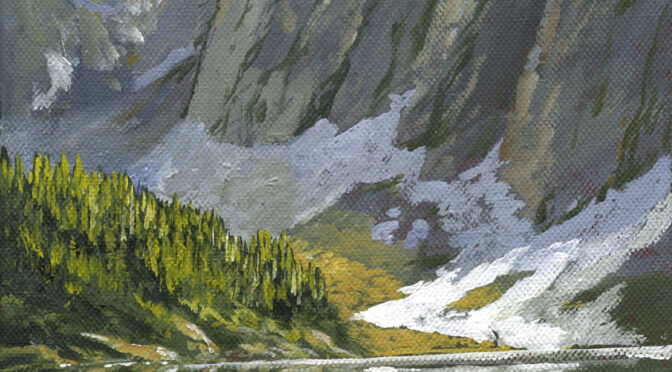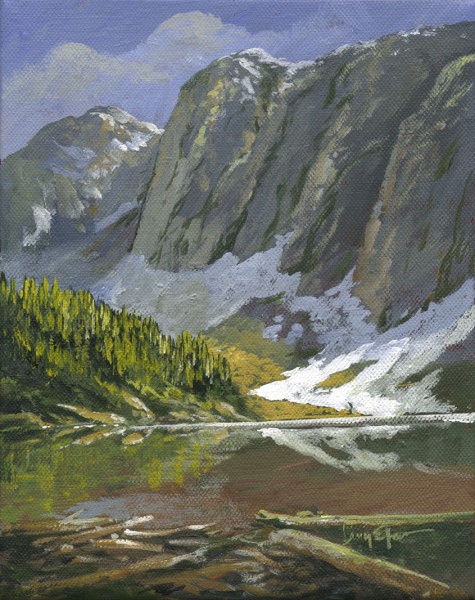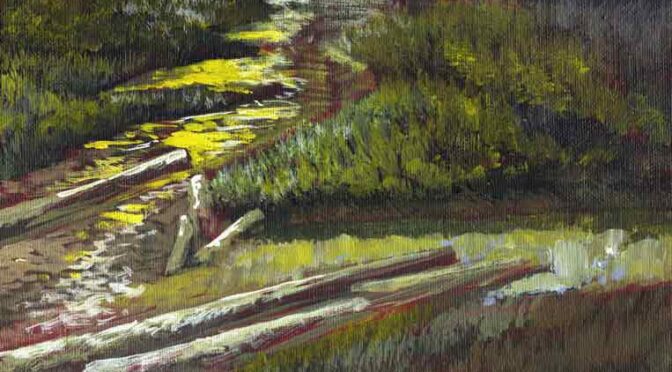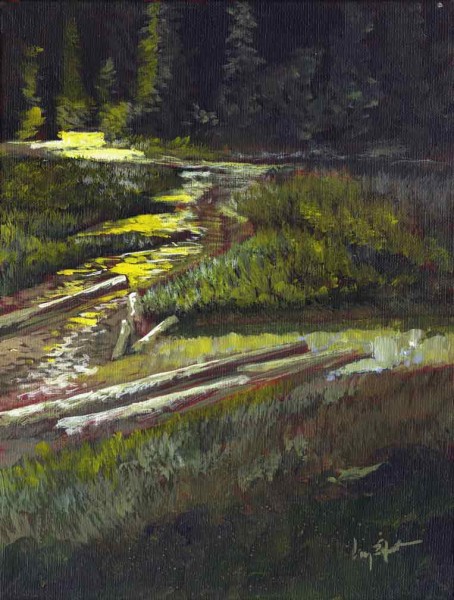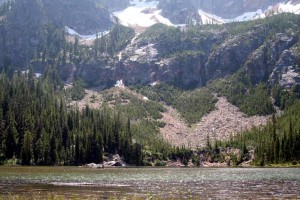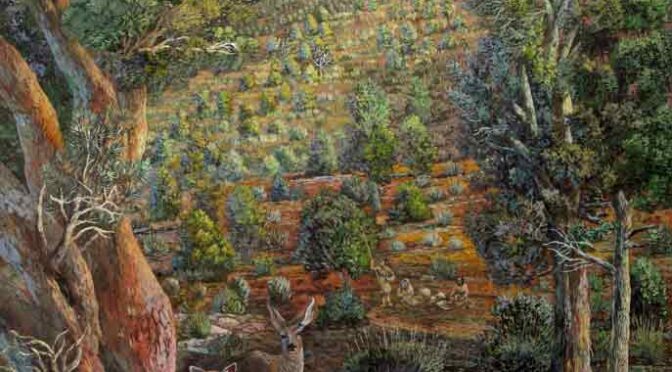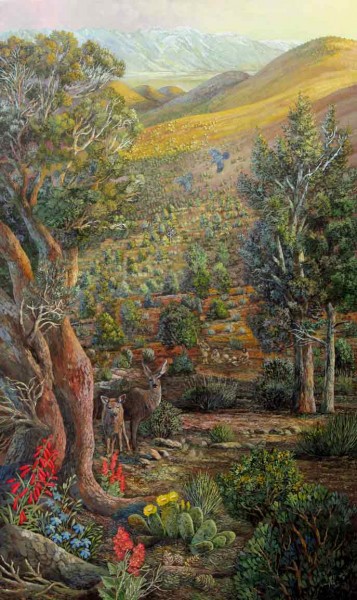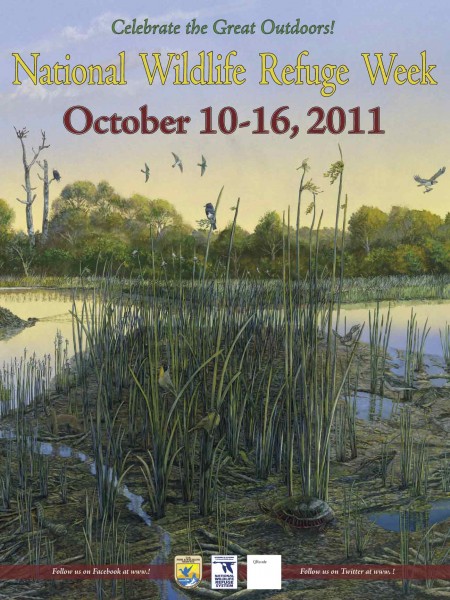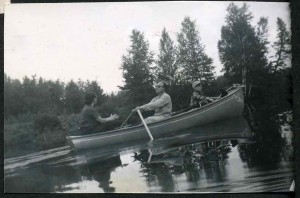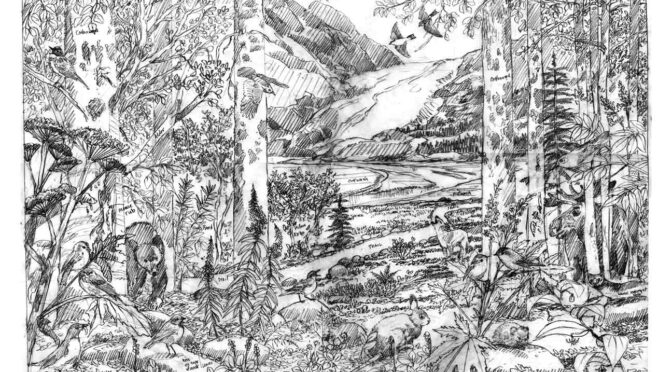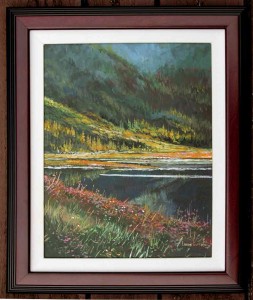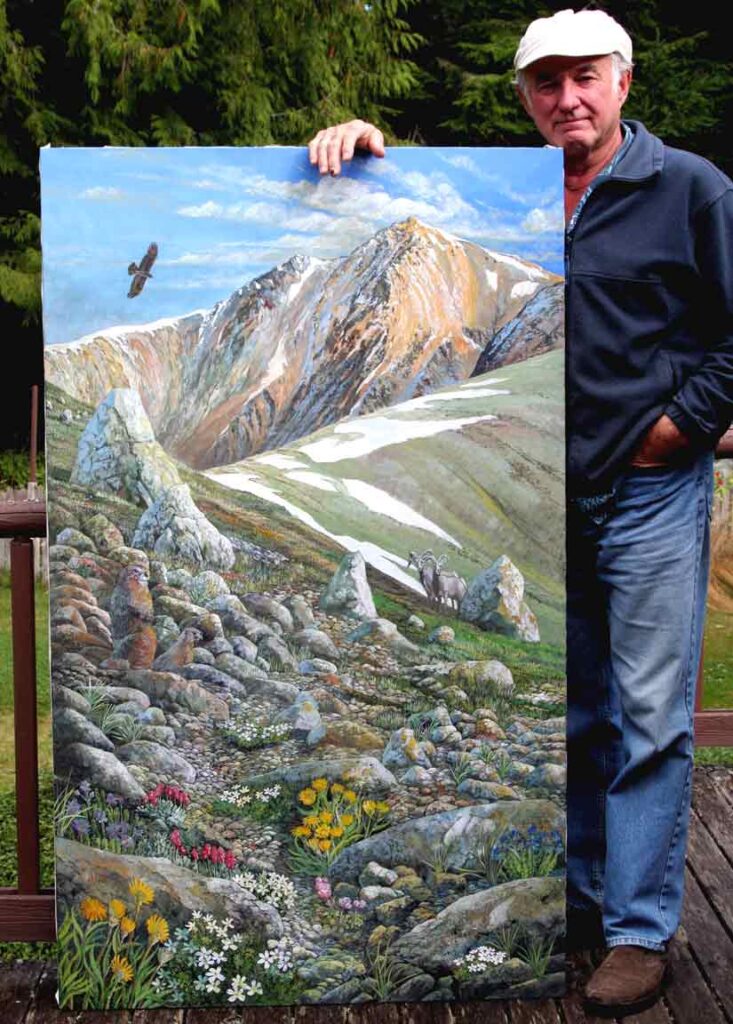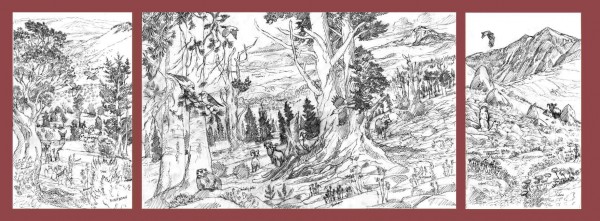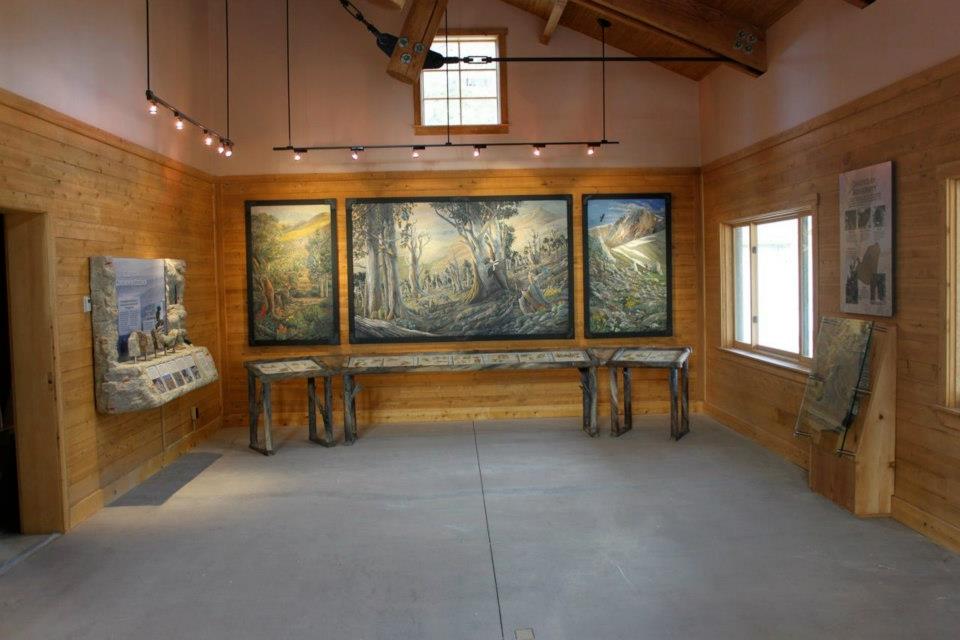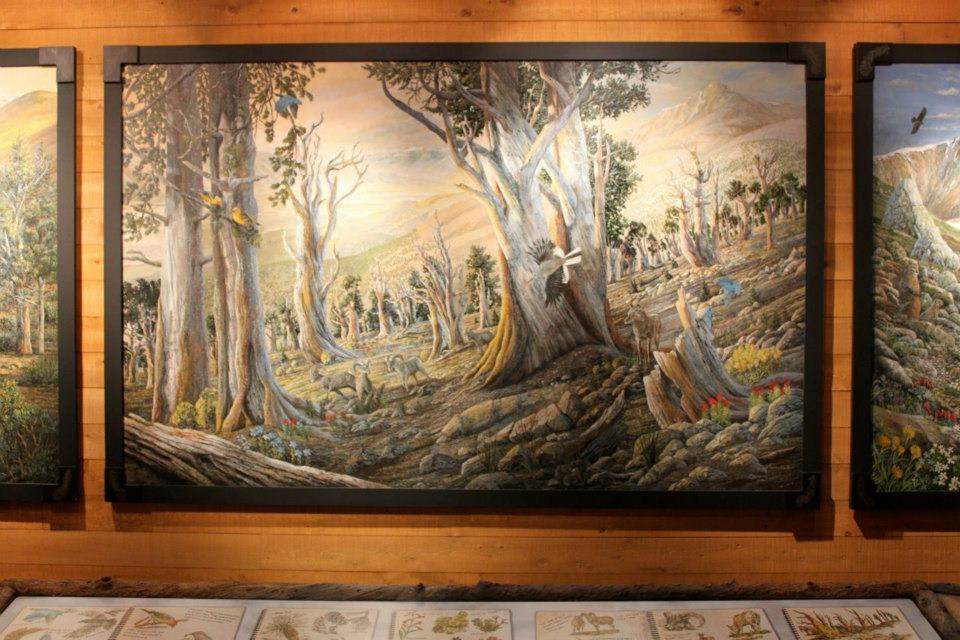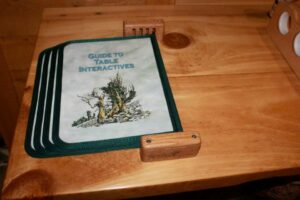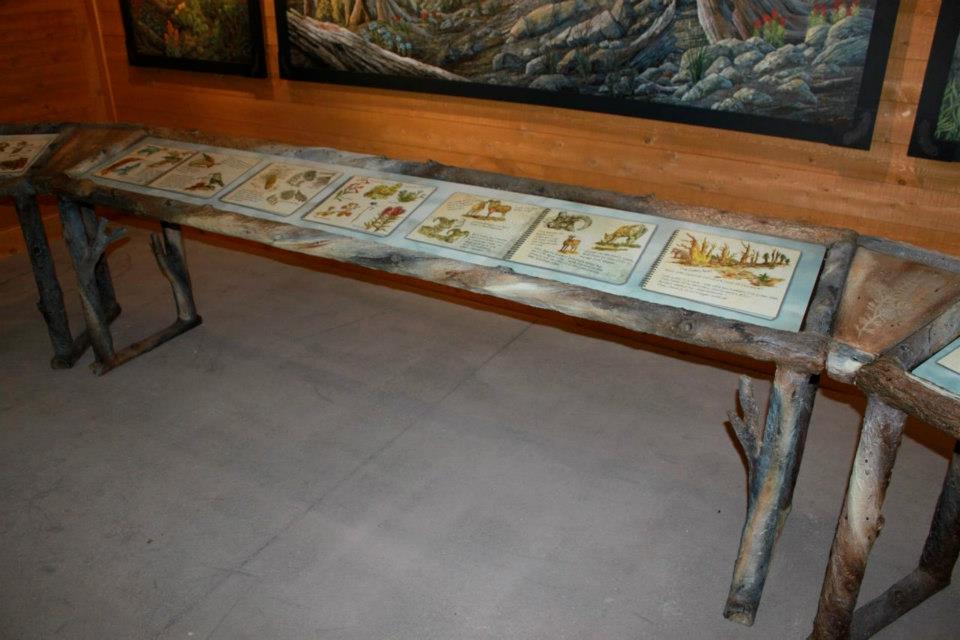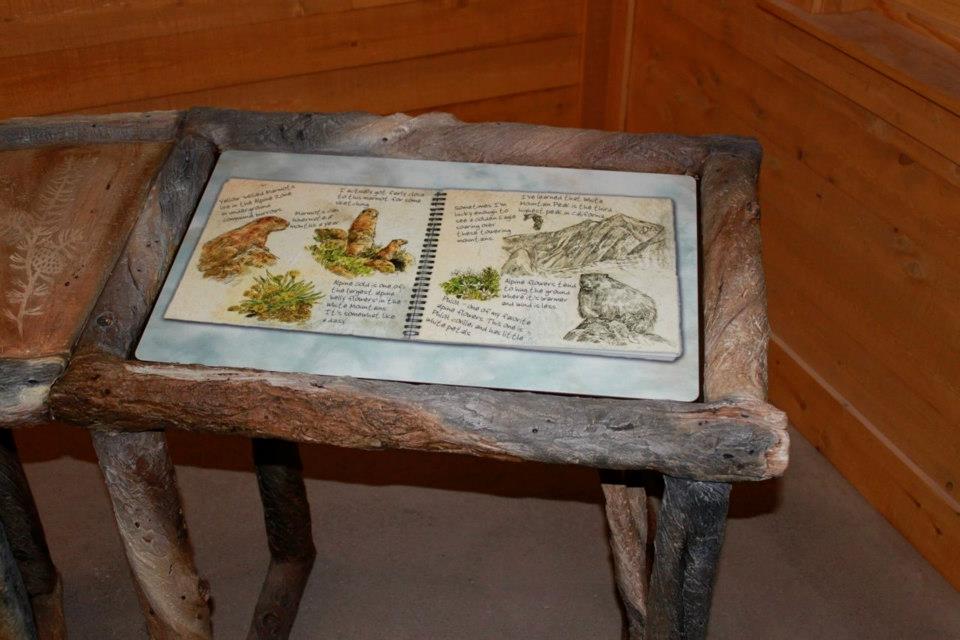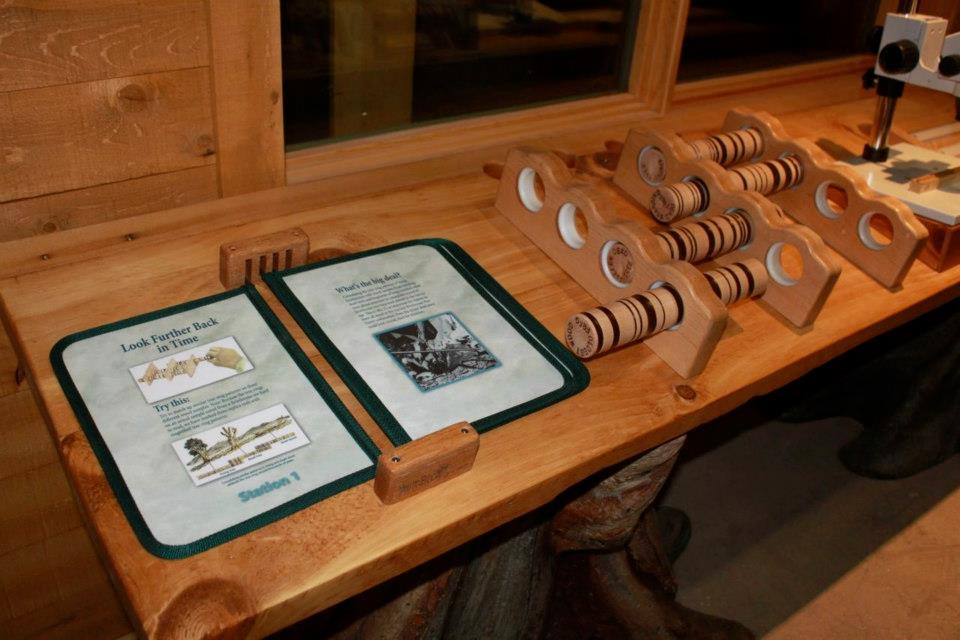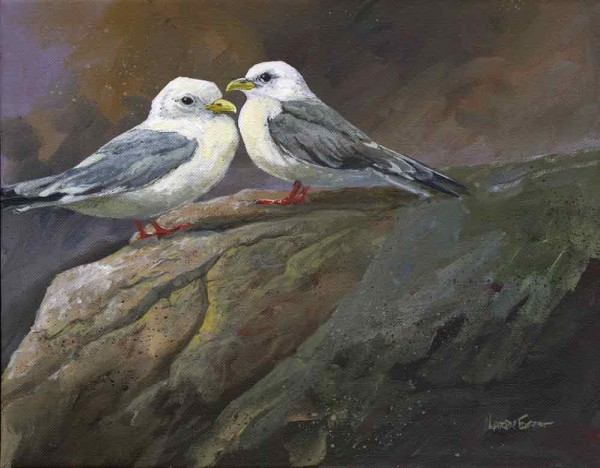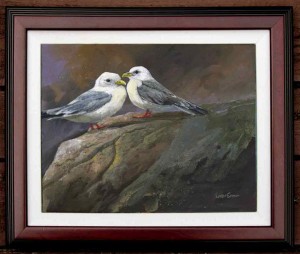A pretty normal name for a very pretty lake. So pretty we visited it several times this summer, and each time I thought it would make a nice painting. Blue Lake is just barely on the west side of the North Cascade Crest here in Washington, almost exactly 100 miles east of our studio here in Port Townsend. When we first asked about the place, we were told “You have to get up there. This is the sort of alpine lake you want to sit down with your lunch and just enjoy for awhile.” And so it was! We found all sorts of mountain goat hair stuck on branches and pikas yelling “peek” to announce we were there. Pristine High Country always gets me!
I was looking at the current snow levels for this same area just yesterday, and saw that some North Cascade passes now have 75 inches already on the ground. Seems pretty early for that sort of thing, doesn’t it?
This ORIGINAL painting is varnished acrylic on linen canvas, 8″ x 10″ and $120 unframed.
A custom wood frame makes it a total of $145 and shipping adds just a bit more depending on your zone or if you take the frame. This is the original painting, NOT a print.
Email us for details.
Thanks for reading this week.
Larry Eifert
Click here to go to the online blog this was to.
Click here to go to our main website – packed with jigsaw puzzles, prints, interpretive portfolios and lots of other stuff.
Click here to check out what Nancy’s currently working on with her photography.
